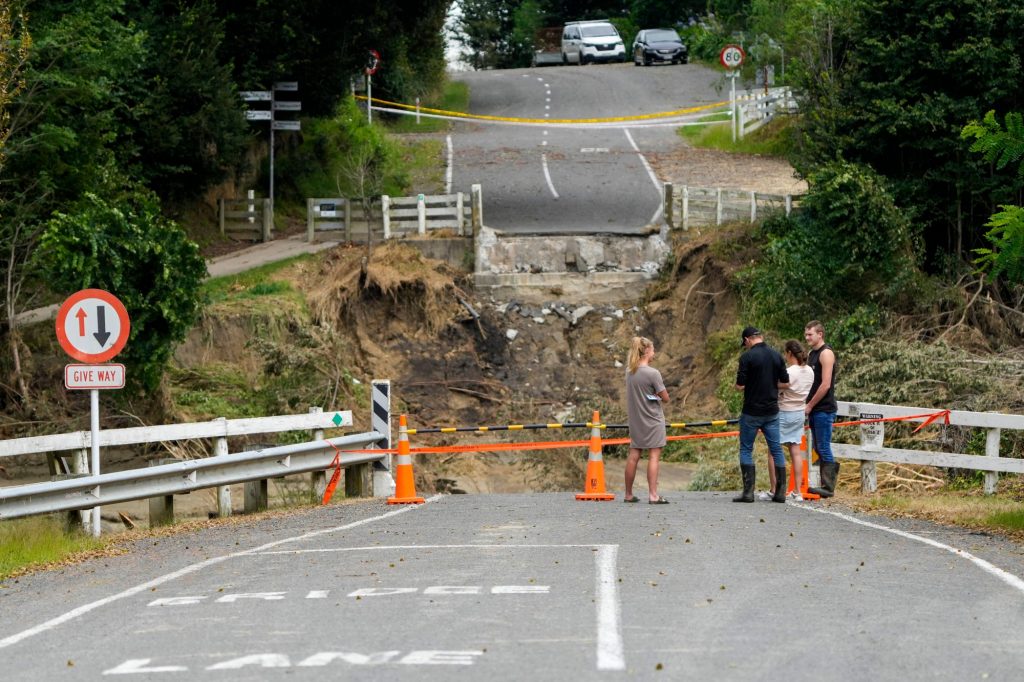Cyclone Gabrielle and other extreme weather has had a big knock-on effect on transport and infrastructure plans, as previously signed-off transport priorities look set to be rearranged, says Infrastructure New Zealand Policy Director Michelle McCormick

The Government has strongly indicated that its draft Policy Statement on Land Transport 2024-2034 is now likely to pivot away from climate change mitigation measures and towards resilience and rebuilding damaged roads, highways and bridges.
These swirling priorities make it difficult for councils to develop their Regional Land Transport Programmes that’s for sure. In* essence green projects such as cycleways and bus lanes look like they may be de-prioritised in order for us to reconnect our regions and make our roads more resilient.
The National Land Transport Fund which was already under pressure with a two billion dollar deficit is running on empty.
There’s clearly not enough money to go around. The fact that we have to choose one thing over another is worrying, and a cause for concern when considering our future infrastructure needs. What it does do, is
shine a big spotlight on the question of how we pay for all this.
At the turn of the year we were already grappling with a $210 billion infrastructure deficit, severely hampering our resilience and progress as a nation. Now, things look even worse.
Governments must react and change direction of course sometimes, but infrastructure shouldn’t, and doesn’t need to be, a political issue. The ongoing list of unfunded announcements and vanity projects needs to stop. A pipeline of essential work should be guaranteed outside of election cycles, with the associated funding locked in. It is time for our leaders and politicians to really answer the question of how we as a country will fund the infrastructure we so badly need.
Right now we are in crisis management, prioritising opening up lifeline roads and reconnecting isolated communities. There is a likeable energy from both the Government and opposition parties around building back better and coming together to make infrastructure a bi-partisan issue.
If only that same drive, creativity and can-do-attitude was extended to the long term planning of infrastructure. Decades of underinvestment have left us playing catch up. Our future infrastructure
bill is eye-watering even without considering the recent damage caused by extreme weather events. There may also need to be a conversation around the levels of service, quality and standards, a gravel
one-lane connection maybe all we can afford now in some places.
Our current approach to funding and financing infrastructure is not working. Today, we are spending around 5.5 per cent of New Zealand’s GDP on building public infrastructure. To meet the identified
infrastructure deficit, this would need to increase to nearly 10 percent of GDP or $31 billion annually.
The Government has committed to almost $80b over five years for a raft of large infrastructure project construction, but it simply will not be enough. We must also remember it’s not just the cost of building
the infrastructure but also the ongoing costs and maintenance. It is clear no government can pay for everything; part of the answer almost certainly lies within the private sector.
Private investment needs to be an attractive option if we are to make the progress required. Aotearoa needs a sustainable flow of funding and financing for infrastructure. When we do invest, too often our critical infrastructure projects, or large programmes of work, are identified without a robust funding plan. Resulting in a scramble for government money from one of the many capital funds.
One way to encourage private sector funding as part of any project’s development is to ensure it is at least considered right from the start, as any business case develops. The gap is not the tools or money itself, it is that we are not using them.
While public-private partnerships (PPPs) have been advanced here, to varying degrees of success, there is an abundance of alternative financing opportunities out there that we are simply not leveraging.
Overseas, private funding of infrastructure has become commonplace. In 2022, it was another record year for global unlisted infrastructure fundraising, with funds raised in the first three quarters of 2022 exceeding the full year for 2021. New Zealand is and can continue to be an attractive destination for international infrastructure investors, but only when there are actually deals to be done and projects to deliver.
The public and private sectors of course have different motivations when it comes to infrastructure projects. Generally speaking, the former is focused on public benefits like the provision of goods and services such as water, transport, communication and education. For the private sector, a commercial benefit sits alongside its expertise in project delivery.
In reality, however, public and private interests can rub along together just fine. As the global pandemic showed us, delivering tangible socioeconomic benefits is in everyone’s interest and there needs to be a balance of expected returns from the investment and an appropriate harmony of risks and benefits.
The private sector should be considered from the outset. Private businesses across the world are indeed addressing the most challenging problems of our times, from climate change to chronic disease, social exclusion, and material poverty. Infrastructure should be no different.




